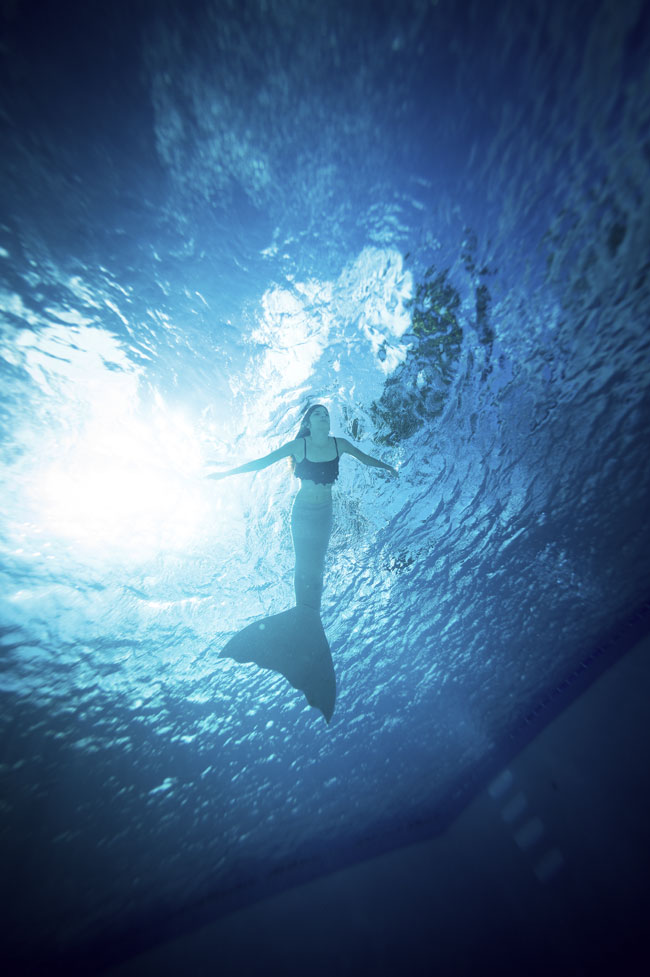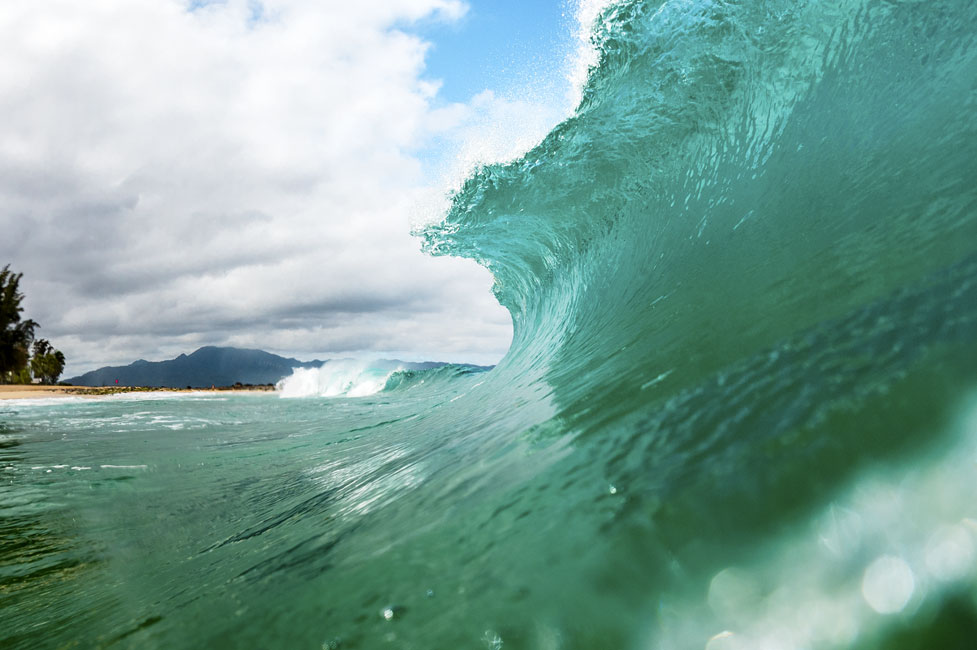Workshop: Waterworld
Going in, around and under
Photographing in and around water opens up an entirely new world of exciting possibilities, but it also complicates the photographic process for pro shooters like me who take their D-SLRs near, into and under the water. While requisites include diving skills, underwater housings and, at certain depths, underwater lights, digital photography provides a big bonus: the ability to shoot hundreds if not thousands of images without having to take the camera out of the water and out of the housing.
Here are the stories behind these three photographs:
Mermaid. - Underwater at the Turtle Bay Resort's pool, Oahu, Hawaii. D4 and AF Fisheye-NIKKOR 16mm f/2.8D in an SPL water housing, 1/8000 second, f/5.6, ISO 720, aperture priority, Matrix metering.
Mermaid. To capture a photo of Te’a Bielmann swimming in a mermaid suit, I dove underneath her and shot straight up as she swam above my position. I used my D4 and 16mm f/2.8D fisheye lens, with both in an SPL water housing made specifically for this camera and lens combination. This type of large water housing is called a surf housing because it's made specifically for shooting surfing; depth rated for 20 to 40 feet maximum, it's not strong enough for scuba diving. Some surf housings have fixed lens ports, but most allow you to change out the port to match the lens you want to shoot with.
One of the keys to success with a surf housing is to set up the camera before you put it into the housing. For the image of Te’a, I set the exposure mode and used the housing's pistol grip trigger to activate the autofocus. I also set the camera's ISO to auto with a predefined range from 100 to 1600 so that the camera could adjust the ISO setting as needed. While this housing allows me to adjust some settings while in the water, in general I need to make guesses based on experience and dial them in before closing up the housing. I think of these housings as equipment that requires a bit more forethought than some other gear.
Sea Kayaker. - In the water at West Penobscot Bay, near Camden, Maine. D700 and AF NIKKOR 24mm f/2.8D in an Ewa-Marine U-B100 water housing, 1/800 second, f/5.6, ISO 400, aperture priority, Matrix metering.
Sea Kayaker. The image of Stephen Leavins was shot at dawn off the coast of Maine with a D700 and a 24mm f/2.8D lens, both in an Ewa-Marine underwater housing bag. I swam into his path and asked him to come right by me. The housing bag kept my camera and lens dry as I swam, and since I was looking through the viewfinder I could compose, focus and shoot in a normal manner.
The Ewa-Marine housing is basically an industrial-strength plastic bag with a crimping closure at the top and a glass port for the lens. Such bags are available in sizes and configurations to fit a variety of cameras and lenses, and while they look a bit strange, they work extremely well for shooting underwater with lenses in the 24mm to 200mm range. Ewa-Marine also has bags that allow you to mount a Speedlight on your camera.
Most of the bags can go down to 60 feet without a problem, and because of their see-through style, you can make adjustments and view the camera's LCD screen while in and under the water. I find the bags perfect for those times when I want to shoot in and around the water when conditions are not extreme. I would not, for example, take one of the bags out in any size surf, as the odds of losing the bag are high; besides, it cannot accommodate a fisheye lens.
Wave. - An open wave image taken in the water at Kei Ke Beach on the north shore of Oahu. D4 and AF Fisheye-NIKKOR 16mm f/2.8D in an SPL water housing, 1/4000 second, f/8, ISO 800, aperture priority, Matrix metering.
Wave. This image is a good example of the perspective you can get when shooting with a surf housing. I took the picture with the D4 and 16mm f/2.8D fisheye housed in the SPL water housing. The camera was set up to shoot in shutter priority mode so I could keep it set at a high shutter speed to stop the motion of the wave. I turned off the autofocus and set the lens to a hyperfocal distance setting so that everything was in focus from two feet to infinity. I didn’t look through the viewfinder—I just held the camera out of the water using the housing's pistol grip and snapped away at 11 frames per second.
If you're inspired to get an image like this, here's an important note of caution: don't attempt this type of impact-zone photography unless you're an excellent swimmer and have expert-level experience in the ocean. This wave face was about ten feet high, and I got slam dunked when it crashed down. I took a beating shooting images like this in Hawaii. I had to swim under hundreds of waves until I found myself lined up with a decent-looking wave face and was in the right position. I wore surf fins and a helmet for protection, but every time I got slammed by a wave my only thought was to hold the housing as far from my head as possible so it didn't slam back into me. Towards the end of the session I was exhausted and at the edge of my abilities—and I was never more than 60 feet from shore.
Diving into the world of underwater photography may seem daunting—and it is—but the reality is that just like all other forms of photography, with a little experimentation, caution and care, you can create some impressive images.
That’s it for this workshop.








